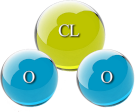Ateromatosis remission
SourceURL: file:///home/Andreas/Documents/CDS/CASE STUDIES/Extremity atheromatosis/Extremity atheromatosis.rtf

Email: reynaud33@hotmail.com
I was diagnosed in 2008 with atheromatosis in both lower extremities. This is obstruction of the main arteries and veins by a calcific accumulation that, being massive and diffuse, would not be operable, according to the opinion of several vascular surgeons that I consulted in the public health system (attached reports). In the private system, no way, due to its very high cost. For this reason, and together with coronary ischemia and chronic hypertension, a medical commission declared me 78% disabled and unfit to work. In addition, I have been asthmatic for years.
I have spent a lot of time looking for viable alternatives for my economic condition and found Jim Humble's website and thus I arrived at MMSChile, kindly assisted by Angelica Costa Correa. I started my treatment on November 09, 2011.
The first thing I noticed on the second day of following Protocol 1000 is that I no longer have difficulty breathing. There are no asthma symptoms or allergies that used to affect me so much in spring.
After about 10 days, I no longer felt numbness in my feet or the cramps typical of this disease.
From then on, I have been able to walk up to 3 blocks without the pain I used to feel after walking 10 meters.
A vascular doctor once told me that he used to call this disease (intermittent claudication is called), “of window dressing”, because you have to stop and wait for the pain to pass, since 10 or 15 meters are like running up a hill.
I have been on treatment for 26 days and I feel better than ever, even though between the 18th and 24th day I had an adverse reaction and again experienced cramps and pain when walking.
I have not lost faith nor have I diminished my hopes, and since yesterday I have felt good again and resumed the exercises that I could not do before.
I will continue to post my progress or any news I have.
My special thanks to Angelica, who has been very kind and has given me very personalized attention.
Update on my testimonial
Three months after the start of my successful treatment with MMS, I want to share with everyone this update.
Since my disease was incurable, I had to take the following medication for life, whose average value is CPL $ 12,000.- per box, which lasts 10 days.
CILOSTAZOL: Indications: Intermittent claudication in patients without pain at rest or necrosis of peripheral tissues.
Precautions: Atrial or ventricular extrasystoles, atrial fibrillation, atrial flutter; diabetes mellitus (increased risk of intraocular hemorrhage); increased risk of bleeding; hepatic insufficiency; hepatic encephalopathy. In severe liver disease, many drugs can also alter brain function and precipitate hepatic encephalopathy. These include all sedatives, opioid analgesics, diuretics that produce hypokalemia, and drugs causing constipation and renal failure.
Adverse effects: Digestive disturbances; tachycardia, palpitations, angina pectoris, arrhythmias, chest pain, edema; rhinitis; dizziness, headache; asthenia; exanthema, pruritus, ecchymosis; less frequently, gastritis, congestive heart failure, postural hypotension, dyspnea, pneumonia, cough, insomnia, abnormal dreams, anxiety, hyperglycemia, diabetes mellitus, anemia, hemorrhage, myalgia, hypersensitivity reactions (including Stevens-Johnson syndrome and toxic epidermal necrolysis in some cases); rarely, anorexia, hypertension, paresis, increased polyuria, bleeding disorders, renal failure, conjunctivitis, tinnitus and jaundice.
Source: http://www.imedicinas.com/GPTage/Obrir.php?ident=caA2
Needless to say, I am now with 80% of my normal functions and I do not take ANY medication other than my maintenance dose of MMS, which by the way has no contraindications of any kind.
With my thanks to Angelica Costa Correa.
Jorge Reynaud P.
